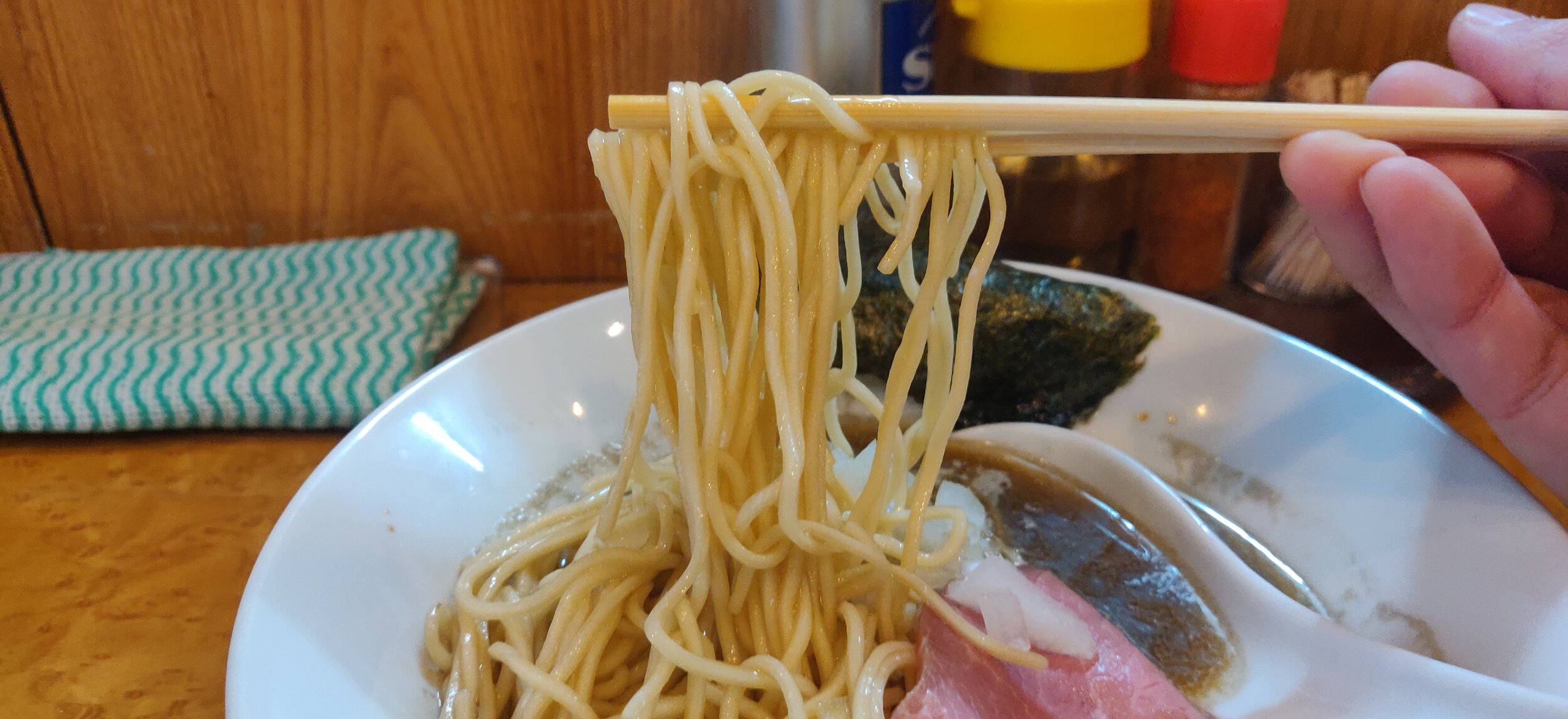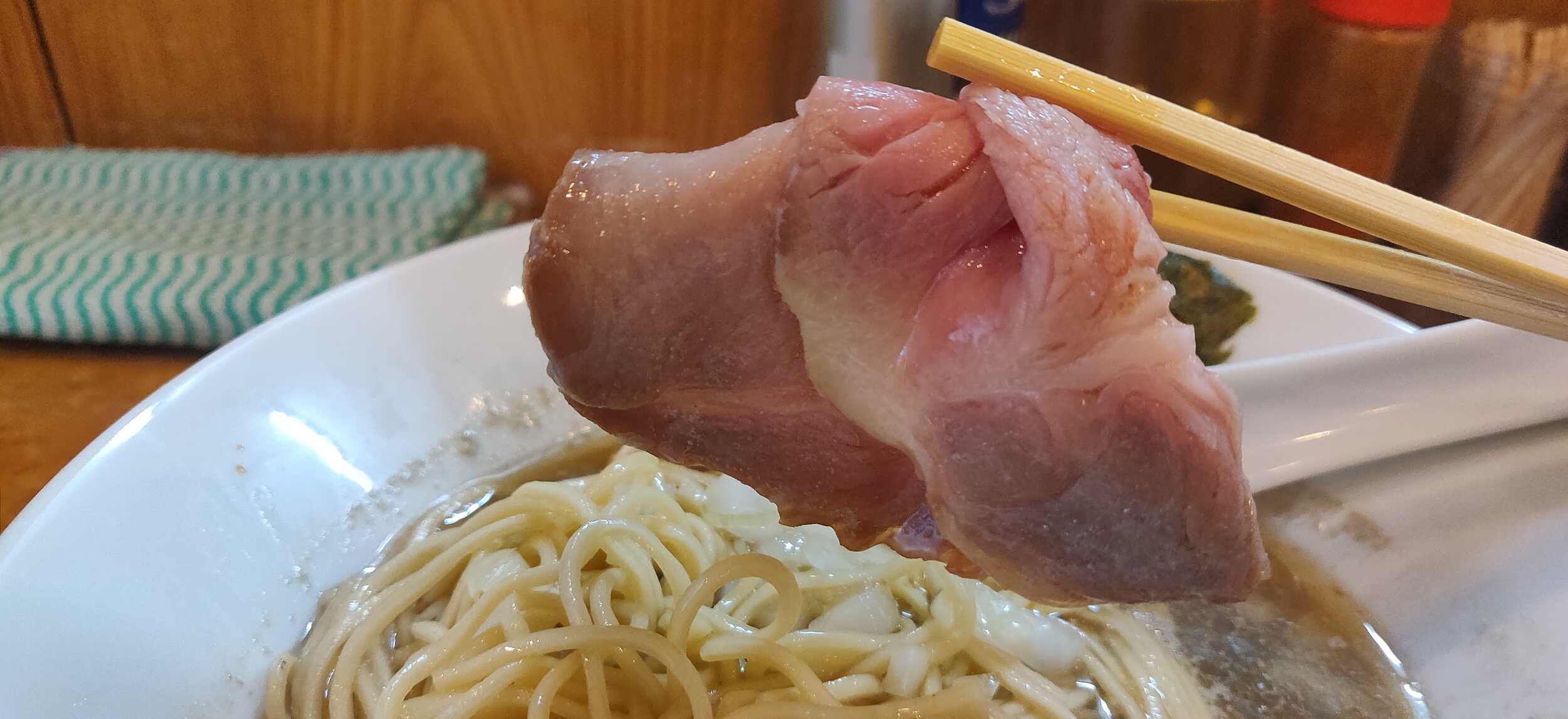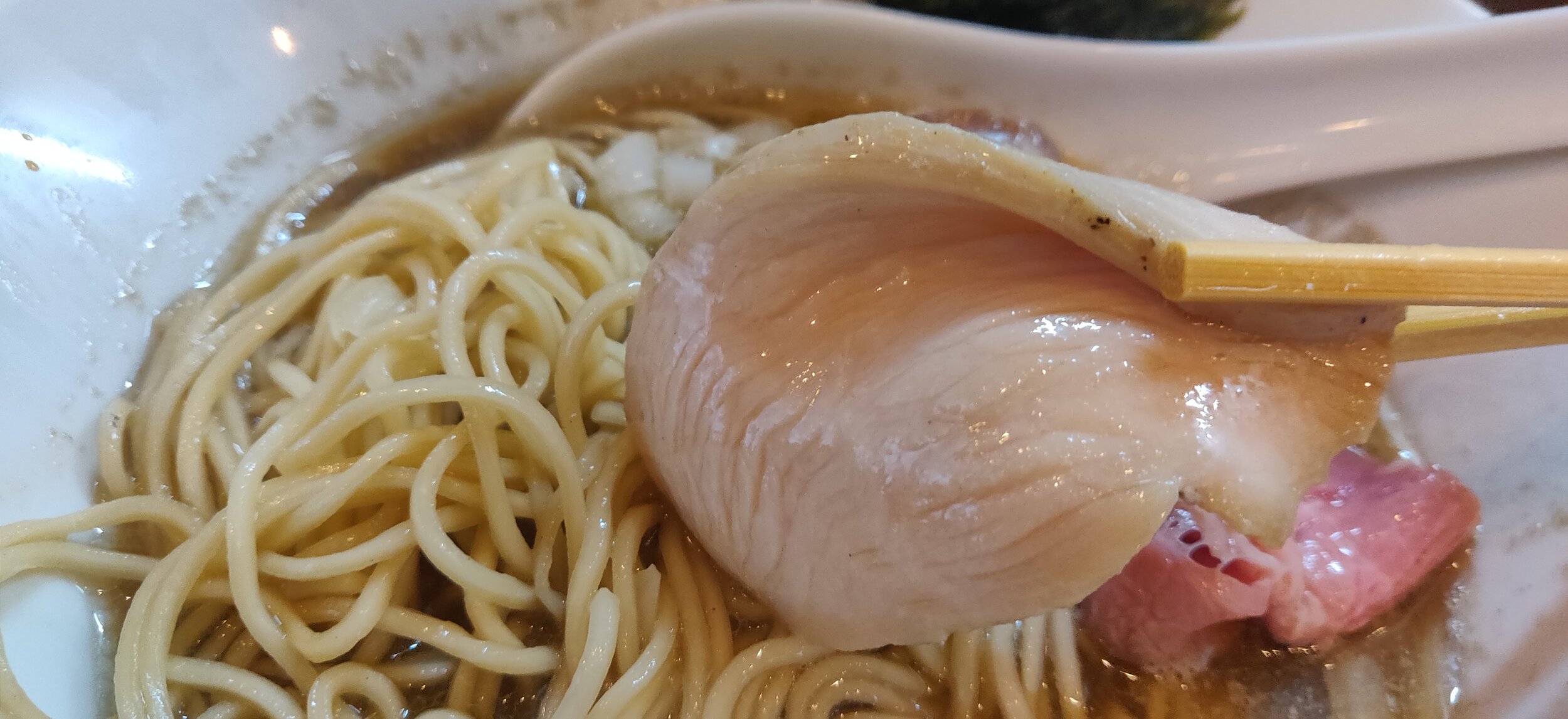Chuka Soba Chigonoki (中華そば 児ノ木); The Next Great Niboshi, Ochiai, Tokyo
Back again with another review and another Top 100 ramen shop crossed off my list. Made a visit in to the west Shinjuku area of Tokyo near Ochiai station to grab a bowl from Chuka Soba Chigonoki. Situated in a pretty residential area of Shinjuku, the area doesn’t get a lot of foot traffic, but the shop draws some huge lines after being featured in numerous ramen magazines and rankings. Opened in 2013, the shop has been a perennial top Niboshi ramen shop in Japan, but have recently picked up a lot of press for being a top ramen restaurant overall. Chigonoki is only open for lunch from 11:00-15:00 with last order being 14:50. Shop is closed on weekends and holidays so you have to be pretty dedicated to make a visit, but it is definitely worth the hassle.
Unfortunately, likely due to its location in a pretty discreet residential area of Shinjuku, the ticket machine is written only in Japanese so I’ll translate them here below. The top row is their most popular item which is their Jyun Niboshi Soba in varying topping options from a regular bowl, to one with Ajitama soft boiled egg, a Tokusei version with extra toppings, and an option for large noodle serving at the far right. The next row down is the Seabura Niboshi which is the Niboshi ramen with a nice bit of pork back fat in varying topping options. Starting on the left is a regular bowl, followed by one with Ajitama soft boiled egg, and finally a Tokusei version with extra toppings. On the far right is an option for Aedama which is extra noodles on the side which is popular in most Niboshi ramen shops. Third row is a Niboshi Maze Soba, or no soup ramen, in varying topping options. Again, starting from the left is the normal bowl, then the Ajitama soft boiled egg, and finally the Tokusei version. On the far right is the button for half size of the Aedama. The three buttons in the middle are for Gentei, specialty menu items which were unavailable during my visit. On the far right, below the three already mentioned is an egg, rice, and pork chashu over rice. The second to the bottom row is the toppings which consist of dried seaweed, extra diced onions, and menma bamboo shoots. Final row are the drinks which is beer, whisky highball, lemon sour, and oolong tea. My order for the day was the Jyun Niboshi Ramen with a Aedama on the side.
The ramen here is simply gorgeous and the visuals are stunning. The name, Jyun Niboshi, stems from Chigonoki’s use of 100% Niboshi for their soup. Very refined soup and the shop is said to use 10kg of Niboshi every day to reach this quality level. Chigonoki uses a blend of Shirokuchi, Seguro Iwashi Niboshi, and Saba Niboshi for this ramen variety with the Seabura, pork back fat added in their secondary menu item. An earthy shoyu is used for the shoyu tare and brings together the Niboshi varieties perfectly. The elegantly combined soup is well worth skipping work in the middle of the day for and soothes your soul of any worry with a single sip. Aroma oil is a combination of Chiyu chicken oil and a Niboshi infused oil which both ups the richness of flavors as well as the intensity of the Niboshi flavors.
Visually, what strikes you most is of course the rosy pink sous vide pork chashu, but alongside it is the moist, succulent chicken chashu, a spoonful of diced onions, a draped dried Nori, and noodles mounded in the middle of their opaque Niboshi soup. The white backdrop of the bowl makes everything shimmer within its borders and makes for a very photogenic bowl. Starting with the soup, I honestly can say enough. Noodles are made from a local noodle manufacturer, but produced by the Master here at Chigonoki. The texture is the most striking part as the stiff, almost brittle noodles pair incredibly well with the soup style. The combination reminded me a bit of Chuka Soba-ya Ito, but not quite as intense.
As for the toppings, the highlight is definitely the rosy pink pork chashu which was cooked to perfection and maintained a moist, chewy consistency throughout my meal. The meatiness worked really well with the snappy noodles and soaked up the elegant soup nicely. Chicken chashu however missed the mark a bit and probably could have been left out entirely. Was cooked to a moist, tender finish, but it didn’t add much apart from substance and became increasingly chewy as it sat in my hot pipping soup. The diced onions are probably one of my favorite toppings for Niboshi and the crunchy, crispness did well to cut through the intensity of the soup here at Chigonoki.
Finally we mustn’t forget about our Aedama which comes when requested. Once you’re 80% done with your bowl of ramen, ask for your Aedama which should be ready by the time you polish off your last 20%. Be sure to save some soup though as you’ll want to have it alongside these extra noodles. If you’re a first timer, what you want to do is mix the noodles thoroughly incorporating everything in the bowl in to one cohesive dish. Next, try the Aedama as is, enjoying the oily sauce, al dente noodles, and Gyofun fish powder coming together as one. I quite enjoyed the sauciness of the Aedama, but it was a tad oily for my liking so I added some of the vinegar provided at the table. Once you felt like you have a nice mix of flavors, dump the remaining noodles in to the remaining soup and enjoy!
Honestly, I typically enjoy my Niboshi ramen with the soup thick and viscous and not light and airy like this one here. However, with how much Niboshi they use for their soup, its hard not to respect this bowl and appreciate the intensity of Niboshi flavors it displays. If you’re looking for a top tier, but on the lighter end Niboshi ramen, I definitely recommend a visit to Chigonoki.







